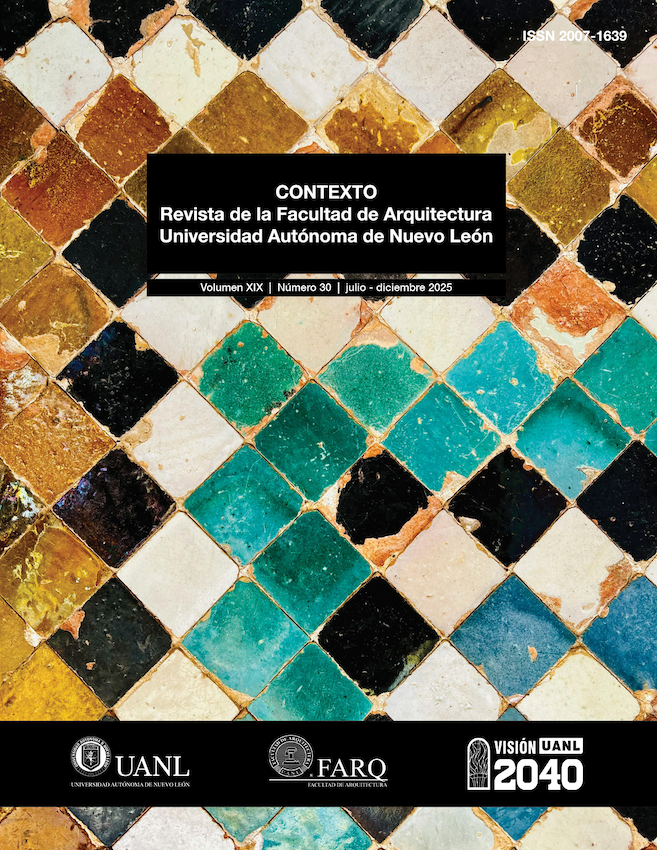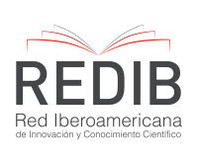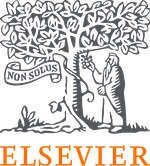Uselessness and meaning of architecture as a work of art: a heideggerian interpretation
DOI:
https://doi.org/10.29105/contexto19.30-447Keywords:
Heidegger, architecture, utilityAbstract
We are going to ask ourselves if it is legitimate to think of architecture as a self-sufficient work of art that can emancipate itself from the useful. Is it possible to experience architecture outside the limits of technical purpose, freed from Vitruvian utilitas? From the point of view of some Heideggerian texts, especially his lecture "The Origin of the Work of Art" and his reference work Being and Time, we propose an affirmative answer.
Downloads
References
Barba Rodríguez, Daniel (2020), “Acumular, envolver, extender y ocultar. Los principios transformadores de Christo and Jeanne-Claude”, Tsantsa. Revista de Investigaciones Artísticas, Núm. 9, pp. 13-25.
Bataille, Georges (1997), La parte maldita, precedida de la noción de gasto. Barcelona, Icaria.
Bareiro, Julieta y Bertorello, Adrián (2011), “Ontología de las relaciones objetuales en Winnicott: Útil, obra de arte y cosas”, III Congreso Internacional de investigación y Práctica profesional en Psicología XVIII Jornadas de Investigación Séptimo encuentro de Investigadores en Psicología del MERCOSUR, pp. 73-76.
Belgrano, Mateo (2015), “La relación entre la obra de arte y la verdad en El origen de la obra de arte”, Tábano, núm. 11, pp. 61-76.
Belgrano, Mateo (2017), “Todo arte es completamente inútil. Continuidades y discontinuidades entre Ser y Tiempo y El origen de la obra de arte”, Tópicos, Revista de Filosofía, núm. 53, pp. 175-202. DOI: https://doi.org/10.21555/top.v0i53.829
Belgrano, Mateo (2020), “Ser (Sein) y sentido (Sinn) en Ser y Tiempo, dos caras de la misma moneda”, Nuevo Pensamiento. Revista de filosofía, Vol. X, núm. 15, pp. 96-114.
Belgrano, Mateo (2022), “Ecos hegelianos en “El origen de la obra de arte” de Martin Heidegger”, Éndoxa: Series Filosóficas, núm. 50, pp. 167-185. DOI: https://doi.org/10.5944/endoxa.50.2022.27200
Bejarano, Rosario (2010), Habitación del vacío. Heidegger y el problema del espacio después del humanismo, Sevilla-Madrid, Thémata/ Plaza y Valdés.
Botton, Alain de. (2008), La arquitectura de la felicidad. Barcelona, Lumen.
Capdevila Werning, Remei (2012), Construir símbolos y hacer mundos. Las dimensiones epistemológica y ontológica de la arquitectura, Enrahonar. Cuadernos de filosofía, nº 49, pp. 107-120. DOI: https://doi.org/10.5565/rev/enrahonar.81
Capdevila Werning, Remei (2020): “Arquitectura (filosofía de)”, Enciclopedia de la
Sociedad Española de Filosofía Analítica (URL: http://www.sefaweb.es/arquitectura-(filosofia-de-la)).
Capitel, Antón (1997), Arquitectura europea y americana después de las vanguardias. Madrid, Espasa Calpe.
Derrida, Jacques (2010), La verdad en pintura. Buenos Aires, Paidós.
Domínguez, Javier (1991), “La teoría estética en Heidegger”, Arete, Vol. III, núm. 2, pp. 184-205. DOI: https://doi.org/10.18800/arete.199102.001
Fédier, Francois (2016), “En torno a El origen de la obra de arte de Martin Heidegger”, Revista de Filosofía, Vol. 72, pp.25-35. DOI: https://doi.org/10.4067/S0718-43602016000100002
Fernández Galiano, Luis (2016), “Arquitectura y vida”, Arquitectura Viva, nº 189, pp. 17-47.
Gadamer, Hans Georg (2003), Los caminos de Heidegger. Barcelona, Herder.
García-Sánchez, Rafael (2024 a), “Rehabilitación visible e invisible. Una interpretación heideggeriana”, Loggia. Arquitectura & Restauración, nº 37, pp. 58-71. DOI: https://doi.org/10.4995/loggia.2024.21987
García-Sánchez, Rafael (2024 b), “Ortega y Heidegger cara a cara en el Darmstädter Gespräch de 1951: “El ser humano y el espacio”, Revista De Estudios Orteguianos, (49), 137–163. DOI: https://doi.org/10.63487/reo.vi49.23
García-Sánchez, Rafael (2024 c), “Más allá del templo como cosa, como instrumento y como obra de arte. Una interpretación heideggeriana”, Arte y Ciudad. Revista de investigación, nº 25, pp. 45-64.
García-Sánchez, Rafael (Coord.) (2025), Hacia una poética del habitar. Pensar lo arquitectónico con Heidegger. Pamplona, Eunsa.
Gasca-Salas, Jorge (2025) “Habitar poético y ciudad: Fundamentos, metasignificaciones y utopías”, CONTEXTO. Revista De La Facultad De Arquitectura De La Universidad Autónoma De Nuevo León, 19(29), 95–108. DOI: https://doi.org/10.29105/contexto19.29-485
Gautier, Théophile (2007), Mademoiselle de Maupin. Barcelona, Mondadori.
Graham, Gordon (1989), “Art and Architecture”, British Journal of Aesthetics, 29(3), pp. 248-257. DOI: https://doi.org/10.1093/bjaesthetics/29.3.248
Graham, Gordon (2000), “Architecture as an art”, Philosophy of the Arts. An introduction to Aesthetics. London, Routledge.
Han, Byung-Chul (2023), La salvación de lo bello. Barcelona, Herder.
Hegel, Georg Wilhelm Friedrich (2011), Lecciones sobre la Estética. Madrid, Akal.
Heidegger, Martin (1988), Vom Wesen der Wahrheit. Zu Platons Höhlengleichnis und Theätet, Frankfurt, Vittorio Klostermann.
Heidegger, Martin (1992), Platon: Sophistes, Ed. Ingeborg Schüssler, Frankfurt am Main, Vittorio Klostermann.
Heidegger, Martin (2003), Introducción a la metafísica. Barcelona, Gedisa.
Heidegger, Martin (2005), Parménides. Madrid, Akal.
Heidegger, Martin (2007), Seminarios de Zollikon: protocolos, diálogos, cartas. México, Jitanjáfora Morelia y Red Utopía, Edición de Medard Boss.
Heidegger, Martin (2014), Experiencias del pensar (1910-1976). Madrid, Abada editores.
Heidegger, Martin (2015), Construir habitar pensar. Bauen Wohnen Denken. Madrid, La Oficina.
Heidegger, Martin (2016), El origen de la obra de arte. Der Ursprung des Kunstwerkes. Madrid, La Oficina. DOI: https://doi.org/10.5771/9783465142362-1
Heidegger, Martin (2018), Caminos de bosque. Madrid, Alianza.
Heidegger, Martin (2020), Ser y tiempo. Madrid, Trotta.
Hitchcock, Henry-Rusell y Johnson, Philip (1984), El estilo internacional, Valencia, Colegio Oficial de Aparejadores y Arquitectos técnicos de Alicante.
Iglesias Sanz, Carlos Miguel (2013), “Elogio de lo in-útil [cuando lo inútil se vuelve necesario], Constelaciones, nº 1, pp. 85-100. DOI: https://doi.org/10.31921/constelaciones.n1a6
Kant, Immanuel (2014), Crítica del juicio. Barcelona, Austral.
Lanfont, Cristina (1997), Lenguaje y apertura del mundo. El giro lingüístico de la hermenéutica de Heidegger. Madrid, Alianza.
Leyte, Arturo (2015), Heidegger. El fracaso del ser. Barcelona, Batiscafo.
Moneo, Rafael (1994), “Conversaciones con Rafael Moneo”, El croquis, núm. 64, pp. 6-25.
Panosfky, Erwin (2007), La arquitectura gótica y la escolástica. Madrid, Siruela.
Paredes, Miguel (2012), “El límite de lo útil”, Pasajes. Arquitectura y crítica, núm. 121, pp. 56-59.
Pedragosa, Pau (2009), “Estética fenomenológica. La obra de arte arquitectónica”, Arbor CLXXXV, 736, pp. 355-367. DOI: https://doi.org/10.3989/arbor.2009.i736.286
Petrucci, Valentina (2020), “Christo: “My work is an entity in itself”, Domus, June.
Polt, Richard (2006), The emergency of Being. On Heidegger´s Contributions to Philosophy. New York, Cornell University Press.
Sharr, Adam (2022), Heidegger sobre la Arquitectura. Barcelona, Editorial Reverté.
Shklovski, Viktor, (1980), “El arte como artificio”, en Teoría de la literatura de los formalistas rusos. México, Siglo XXI.
Vattimo, Gianni (1993), Poesía y ontología. Valencia, Universitat de València.
Vattimo, Gianni (2009), Introducción a Heidegger. Barcelona, Gedisa.
Vitruvio, Marco (1993), Los Diez libros de Arquitectura. Barcelona, Alta Fulla.
Whitney, Erika (2021), “Heidegger y la verdad de la obra de arte”, Diferencia(s). Revista de teoría social contemporánea, núm. 12, pp. 155-162.
Wilde, Oscar (2019), El retrato de Dorian Gray. Madrid, Siruela, Madrid.
Winckelmann, Joachim (2011), Historia del arte de la Antigüedad. Madrid, Akal.
Downloads
Published
How to Cite
Issue
Section
License
Copyright (c) 2025 Rafael García Sánchez

This work is licensed under a Creative Commons Attribution-NonCommercial 4.0 International License.
The authors who publish in this journal accept the following conditions:
1. The authors keep the copyright and give the journal the right of the first publication, with their content registered under the Creative Commons License, which lets third parties to use the published material as long as they mention the authors and the first publication from the journal.
2. The authors can make other independent and additional contractual agreements for the non-exclusive distribution of the version of the article published in the journal (for example an institutional repository or a book) provided that they explicitly mention that the content was first published in CONTEXTO. Revista de la Facultad de Arquitectura de la Universidad Autónoma de Nuevo León..














.png)





